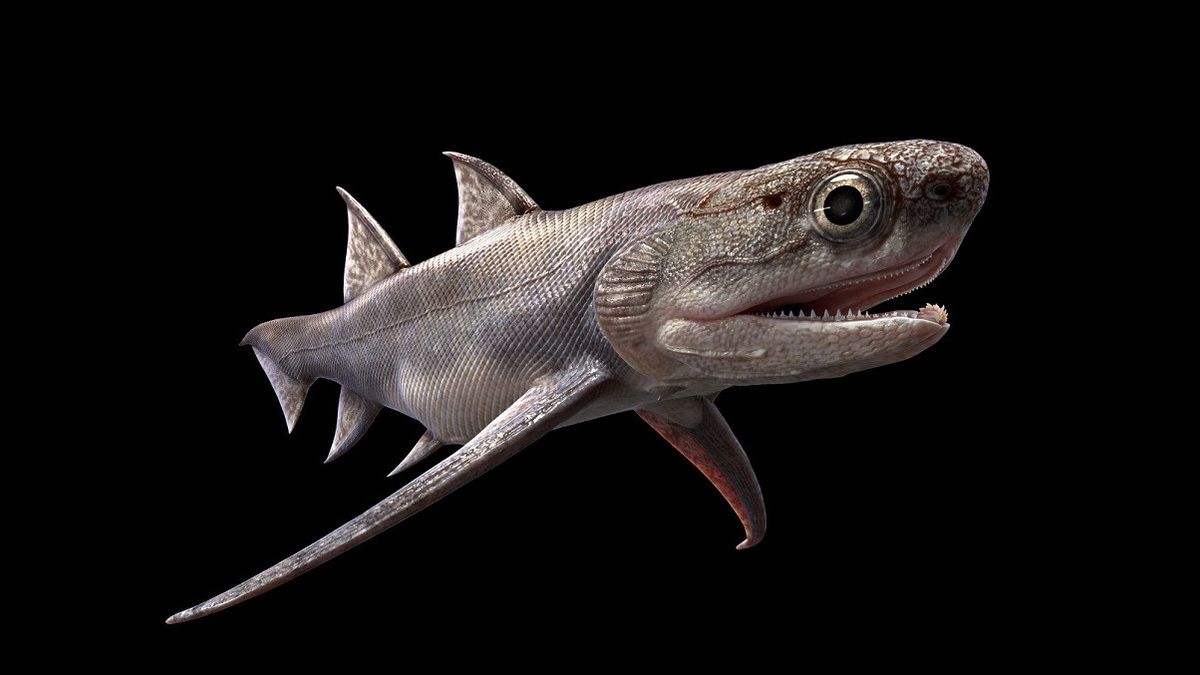JAKARTA - Long been a mystery, slowly the origin of the jaw for the vertebrata began to see a bright spot, as researchers described the earliest known vertebratas as having a jaw.
It was revealed by fossils of four extraordinary fish species found in China, two dating back to 436 million last year and two out of 439 million last year.
To date, only the vertebrata fossils of critical times in the evolution of animals with known spines leave the earliest with the jaw as a mystery.
"The new fossils change everything. Now we know how big they are, what they look like, how they evolved over time," said vertebrata paleontologist Min Zhu of the Chinese Academy of Sciences in Beijing, who led the study published in the journal Nature.
The newly identified species, no more than a few inches in length, are part of two fossil treasure troves of the Silur Period found in southern China. To date, the earliest known vertebrata is the fish aged 425 million years ago.
"Almost all the spined or vertebrata animals you know, for example, that you see in zoos and aquariums, and even our own, are common vertebratas," Zhu said.
"Fattebrate basic body planning is shaped quickly after its origin. For example, we can track almost all of our organs in the human body to the first fish. That's why it's important to look back, trace its origins," he said.
More than 20 fish with a length of about 1.2 inches (3 cm) called the Xiushanosteus minabilis were found in the Kotamadya Chongqing. It was part of a group of'struce-covered' fish called placoderms.
The front half is covered by semi-circular bone plates. The back looks more like an ordinary fish, including a strong tail. He lived 436 million years ago, just like the relatives of the same size as the vermideformist Shenacanthus whose fossils came from the same site.
Shenacanthus is wrapped in large bone plates in the shoulder area, surprising to relatives of sharks. Unlike modern sharks, Shenacanthus has a weak jaw and toothless jaw, possibly eating a small soft prey.
Two other shark relatives, Qianodus duplicis 4 inches (10 cm) andFjingshania Renovata 6 inches (15 cm), came from 3 million years earlier discovered in the nearby Guizhou province.
They are the earliest known members of the shark lineage, although their fossils are incomplete and well-preserved like the other two species.
Qianodus is the earliest known vertically, another evolutionary milestone. His teeth are spiral, as Qianodus has brought several generations of them added throughout his life. Fjingshania boasts of external bone protection and some pairs of fin durians.
The fish first appeared about 520 million years ago. The earliest fish had no jaws, as did the modern lamprey and hagfish. When the newly identified species live, the largest marine predator is a marine penis with a length of 2.5 meters. The jaw helps pave the way for fish to quickly dominate the oceans and then generate a land vertebrata that branched into amphibians, reptiles, birds, and mammals.
"The jaw is important because it allows the vertebrata to become an active predator for the first time. But it's also important to understand that the appearance of the jaw is only a small part of the overall transformation of the multibrata body's plans at this evolutionary point," explains paleontologist and study co-author Per Ahlberg of the University of Uppsala in Sweden.
"At the same time, the skull construction changed radically, the inner ear changed, the head separated from the shoulder bone, the stomach fin evolved, the heart away from the liver, and the stomach developed. The only drastic transformation in the entire evolutionary history of vertebrata," added Ahlberg.
The English, Chinese, Japanese, Arabic, and French versions are automatically generated by the AI. So there may still be inaccuracies in translating, please always see Indonesian as our main language. (system supported by DigitalSiber.id)













